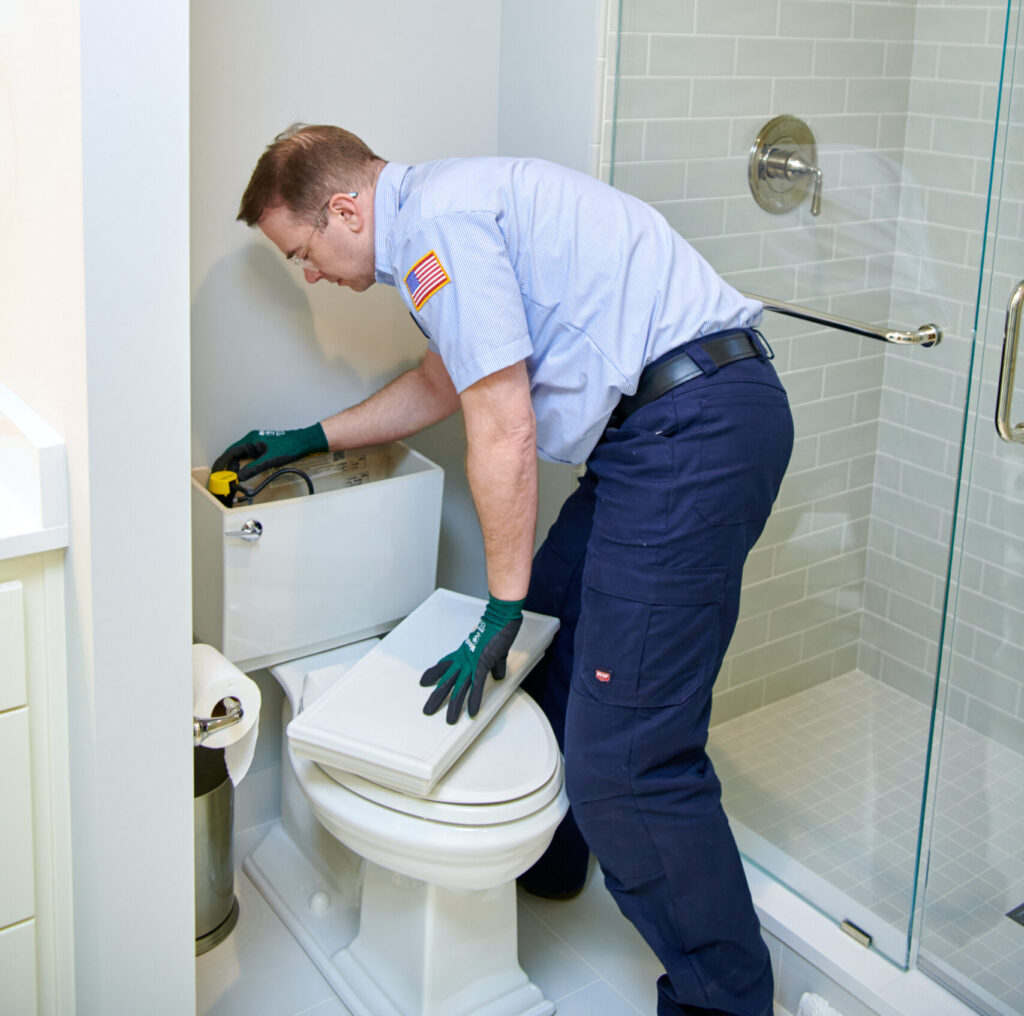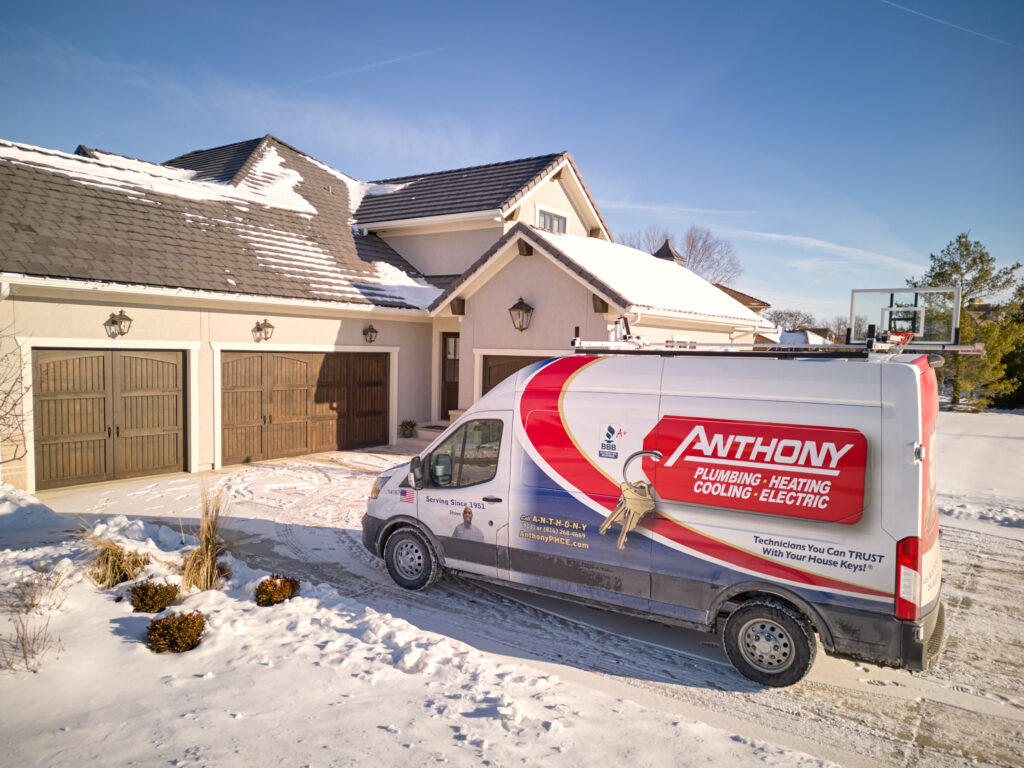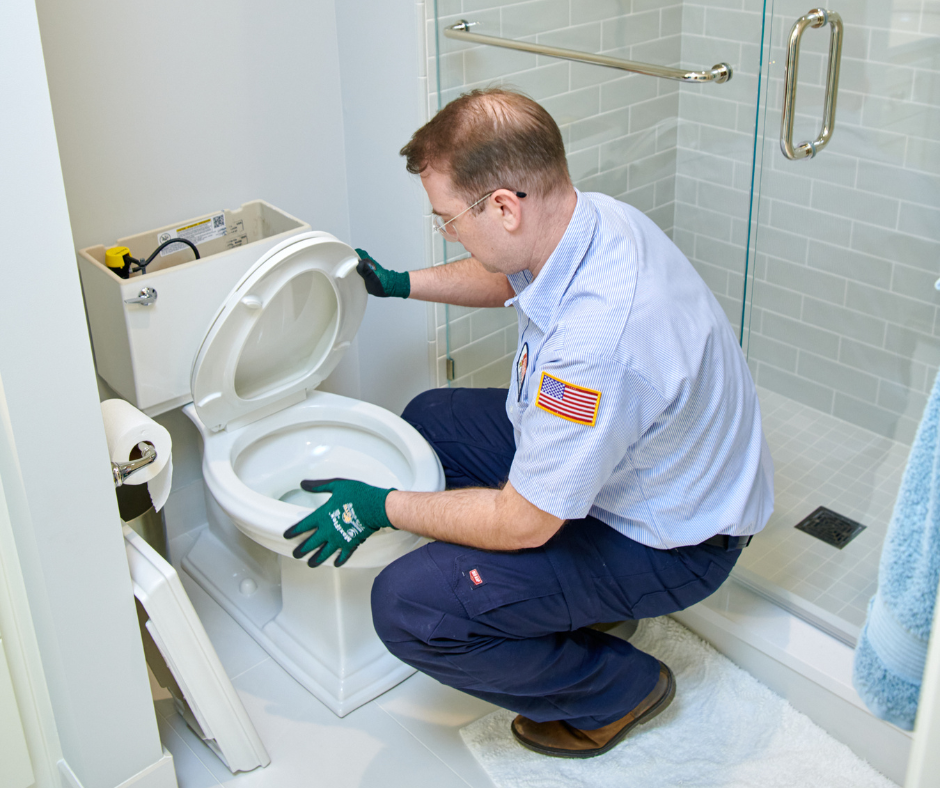BLOG
Tankless Water Heater 101
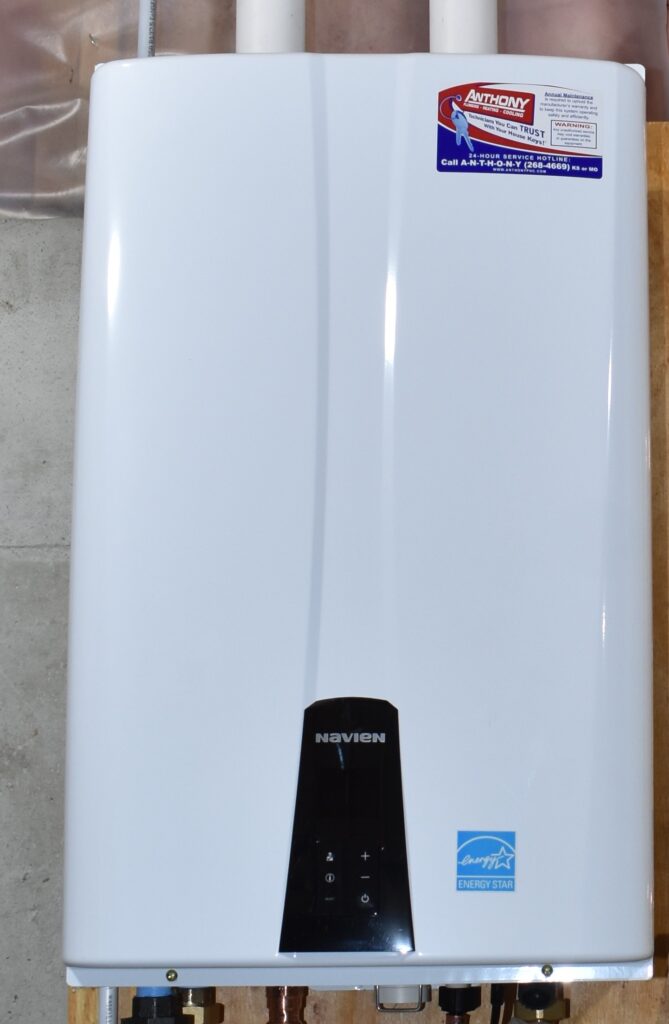
There are pros and cons to a tankless water heater; It’s all a matter of how much hot water your home requires and whether you are willing to wait for your investment to pay off.
We'll walk you through the key advantages and disadvantages to help you make an informed buying decision.
While tankless heaters are more expensive (sometimes three times the amount of a traditional water heater), they have a longer lifespan and can lower your utility bill significantly.
If you’re using 41 gallons or less of hot water daily, a tankless hot water heater can be 24%-34% more energy efficient than storage tank water heaters. If you use more hot water (like 86 gallons a day), they can be 8%-14% more energy efficient. Plus, life expectancy is typically more than 20 years with a tankless water heater.
In this guide, we'll go over the key advantages to a tankless water heater, how to calculate the size and type you'll need, how they work and what differentiates the different types. We'll also go over some aspects you might have to sacrifice when investing in a tankless water heater.
Advantages of a Tankless Water Heater
There are several advantages to choosing a tankless water heater over a tank heater. What really differentiates a tankless water heater from a traditional water heater is that they can eliminate standby heat loss.
Where a regular hot water heater is constantly heating and storing water, tankless hot water heaters heat water on demand. This means there is no hot water sitting idly in a tank and losing heat. Some tankless water heaters are controlled via a thermostat, giving you more flexibility to vary output temperature.
Another perk is that they take up less space and are better for the environment—the rusty tank doesn’t get thrown in a landfill. Your larger, traditional heaters take up a huge amount of space with their 30-50 gallon tanks. Some that hold 40-60 gallons can be 60 inches tall and 24 inches wide.
Compare that to a tankless water heater that’s roughly the size of a large computer, and you can see why these bad boys are so popular in homes with little free space.
These tankless hot water heaters are rated by the maximum temperature rise possible at a given flow rate. You’ll need to figure out how many hot water devices you intend to use at any one time (ie: running the washer and shower at the same time) and add up the flow rate (in gallons per minute).
You’ll want to shoot for this desired flow rate when looking for the best tankless water heater. To cut down on the flow-rate, you can invest in low-flow water fixtures.
Calculating Temperature Rise
When deciding which type to go with, you should consider both the flow rate and the temperature rise (ie: difference between groundwater temperature and desired output temperature). You can use this map to see the average groundwater temperature for your area.
Simply subtract your groundwater temperature from your desired output temperature. You’ll want to shoot for 100-115 degrees Fahrenheit for your water to be heated. If your groundwater temperature is 60 degrees and you want your shower at 110 degrees, that’s going to be a 50-degree rise.
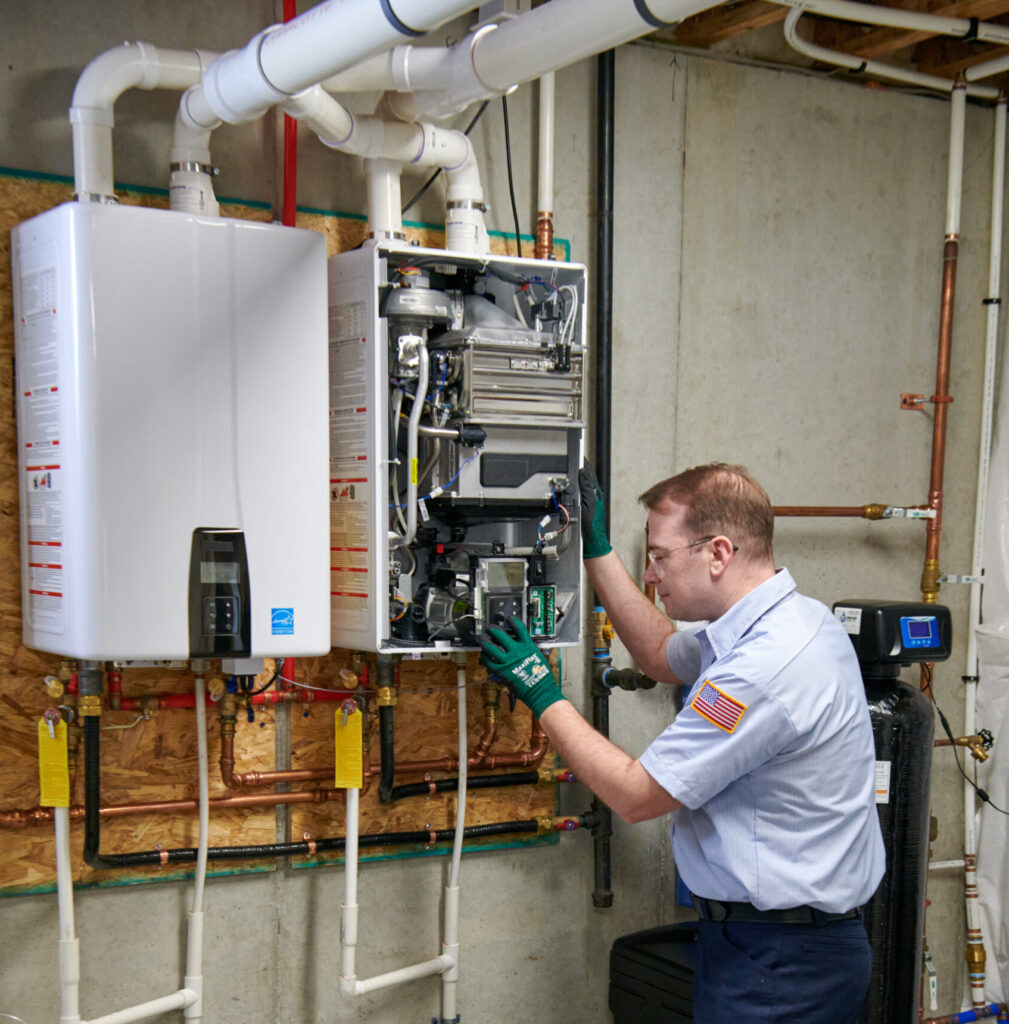
Calculating Flow Rate
Flow rate can be calculated by adding up the GPM for the household water fixtures you’ll need at one time. A bathroom faucet with low-flow is estimated at 0.5-1.5 GPM. Most faucets installed past 1992 are set at 2.2 GPM and 3.0 and 5.0 GPM post-1992. A kitchen faucet could be anywhere from 3.0-7.0 GPM. Since kitchen faucets don’t use aerators, there are no low-flow numbers.
A shower’s low flow rate it normally pegged at 1.0-2.0 GPM. Pre-1922 heads can range anywhere from 4.0-8.0 GPM. If you notice that hot water isn’t reaching your faucet as quickly as you would like, you can add a circulation system to the heat source.
Depending on the tankless model you choose, it may already be designed for a circulation system add-on—no reconfiguring piping or buffer tank necessary.
What Size Tankless Water Heater Do I Need?
Here’s an example from Compact Alliance to help you use these figures to calculate the tankless hot water heater necessary for your needs:
An average shower will be between 104–106° and uses 2.6 gallons of water. Assuming your water temperature is 40° coming into your home, and you want to produce enough hot water to run 2 showers at the same time, what temperature rise would you need to produce to accomplish this?
Answer: You’ll need to raise the incoming water temperature from 40 degrees to 105. You’ll need to be able to heat at least 5.2 gallons of water, so you’ll need a tankless water heater that can produce at least a 60 degree rise in temperature at 5.2 gallons per minute.
How Does a Tankless Water Heater Work?
Water is heated when the hot water tap is turned on. The cold water travels via a pipe into the unit, where it is then heated with a gas burner or electric elements (heating coils). A powerful heat exchanger transfers the heat from one source to another.
This exchanger is activated by the flow of water. Flow sensors measure the exact flow rate and takes into account the temperature readings at the heater’s inlet/outlet. This data is sent to the temperature controller. Combustion gases safely exit through a dedicated, sealed vent system.
Unlike with a storage tank, you don’t have to wait for the storage tank to fill up with enough hot water. The downside to tankless heaters is that their output limits the flow rate. The average tankless water heater heats water at about 2-5 gallons per minute.
The gas fire tankless water hearers have a higher flow rate than electric ones, but they’re still strained when multiple hot water sources are running at once. To remedy the issues, you can install two or more tankless hot water heaters or install separate heaters for different appliances that use up a lot of hot water.
To install these systems properly, you’ll need to take into consideration fuel type, climate, local building code requirements and safety issues.
Tankless Water Heater Pros & Cons
The U.S. Department of Energy estimates gas-fired tankless water heaters save an average of $108 in energy costs each year compared to traditional tanks. Electric tankless heaters save $44/yr.
However, you have to compare this number to the cost of the heaters themselves. A tankless water heater can cost anywhere from $1,000-$3,000.
You’ll need to make sure that your home can handle a tankless water heater. If you have electric-only utilities, for example, you’ll need to upgrade your electrical system. This can be a costly endeavor.
Sometimes, tankless water heaters require more intricate installation as well. Your home’s gas piping, gas meter and gas line to the meter may not be the appropriate size for the high gas load that will be replacing the conventional storage gas heater. When not installed properly, these heaters may underperform or present a safety hazard to your home.
Energy Efficient
Tankless water heaters that utilize natural gases are 23% more efficient than a traditional storage version (60% efficiency). Gas-powered tankless water heaters qualify for a $300 tax rebate as well.
You’ll be able to calculate how much hot water the heater can deliver over a set period of time by taking into account the first-hour rating for storage tank water heaters and the gallons-per-minute rating for tankless water heaters.
Hot water heaters typically provides 3.5 gallons of hot water per minute. If your home uses less than 41 gallons of hot water each day, you’re the perfect candidate for a tankless heater. In your case, they can be 23%-34% more energy efficient according to Energy.gov.
Types of Heaters
There are a couple different types of tankless heaters: point-of-use and whole-house. Point-of-use systems can only heat water for one or two outlets. You can stick them under a cabinet or in a closet, because they’re so small.
You'll be able to reduce water loss by decreasing lag time (time it takes for the hot water to reach your faucet). In larger houses, this lag time can last several minutes.
You can also pick between electric, propane or natural gas models. Where point-of-use models are typically electric, whole-house systems utilize natural gas or propane.
Gas and Propane
The gas and propane-powered heaters are more powerful, which makes them ideal for whole-house systems. The key difference between a whole-home gas tankless water heater and a standard gas heater is the storage tank.
An Energy Star-certified tankless water heater harnesses the power of a secondary heat exchanger to reduce energy consumption by 9% compared to a conventional gas tankless water heater.
This secondary exchanger take out extra heat from the combustion gas and cools it to condensation. This is where they get the name ‘gas condensing’. They also require venting through a vertical PVC pipe and condensation drain. You’ll see electric models more in point-of-use scenarios, though some people purchase two in parallel.
Electric
Those seeking a shower in a pool house or hot water for an outdoor kitchen are better off with a small, electric tankless heater. Plus, electric models don’t create greenhouse gases and can be operated with a remote control. You don’t have to worry about flooding from a ruptured tank either.
Getting the Best Tankless Water Heater
We want to help you get the best tankless water heater for your hot water needs and budget. If you’re interested in a tankless hot water heater, contact us. Our certified technicians can answer any questions you have and get the job done on YOUR schedule.


